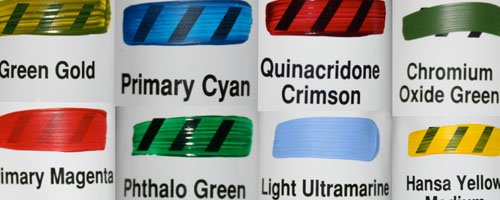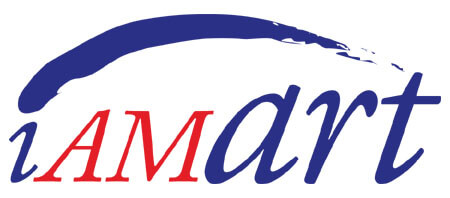paints: opaque vs. transparent
properties of colors and pigments

The opacity, or hiding strength, of a paint describes how it interacts with light. Opaque paints are more reflective (not to be confused with “shiny”). They cover and hide what’s under them. Transparent (or translucent) paints allow more light to pass through them. They are ‘see through’. Learning about and observing the opacity or transparency of paints enables artists to have greater command over techniques like glazing, layering, optical color mixing, or avoiding pentimento, a bothersome effect where paint becomes more transparent as it dries, revealing what’s underneath.
Paints are rarely perfectly opaque or transparent. Most paints fall somewhere between completely opaque and completely transparent. The term semi-transparent describes paints that show a balance of opacity and transparency. When paints consist of a mixture of pigments, opaque pigments will usually override transparent ones and the mixture will be opaque. This interaction is important to consider on your palette since a transparent pigment, even if it seems very strong and dark (like phthalo green, for example) will be dramatically altered by adding even small amounts of an opaque pigment such as titanium white.
Most paint makers indicate on the tube some measure of opacity along with series and color index codes. A common visual code to indicate opacity or transparency is the use of small circles on paint labels and charts, with the circle filled in for opaque, open for transparent, and filled in half-way for semi-opaque/semi-transparent. Many paint makers also provide actual hand painted swatches, either on the tubes themselves, on display racks, or on charts that show the opacity or transparency of each color of paint.
